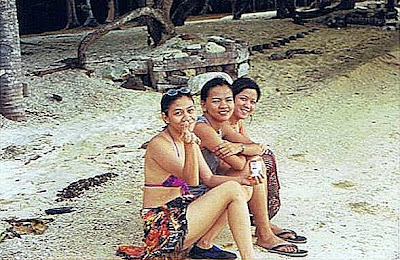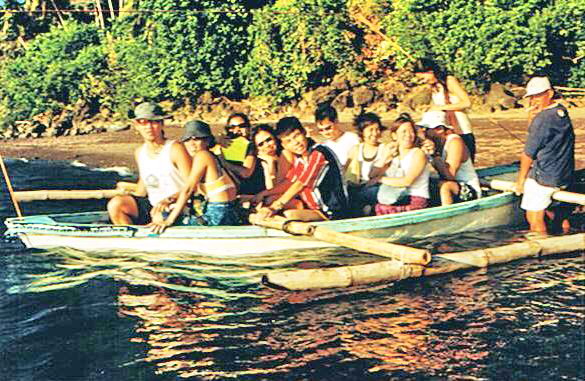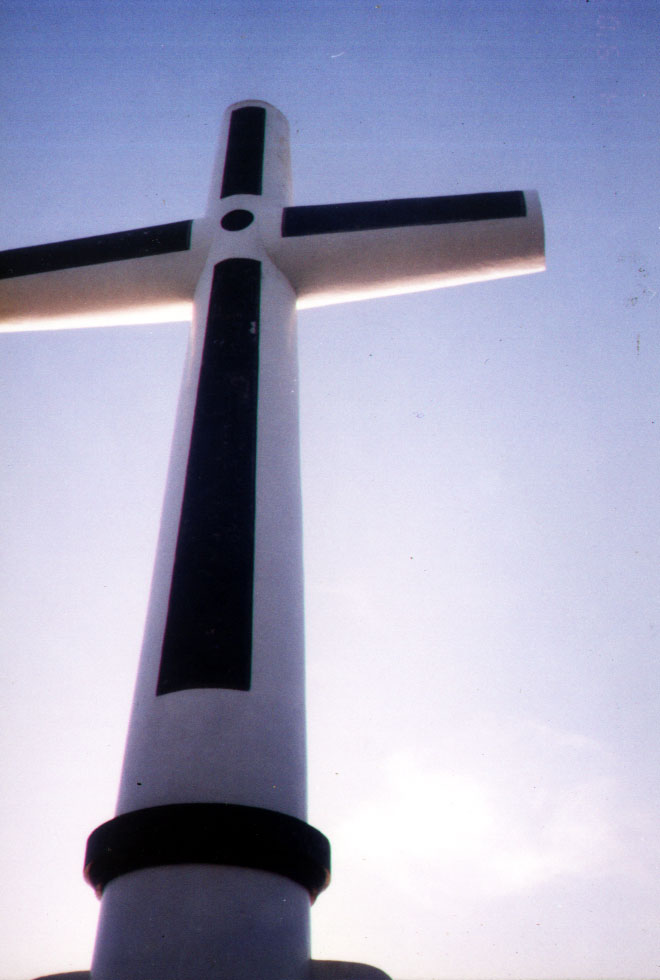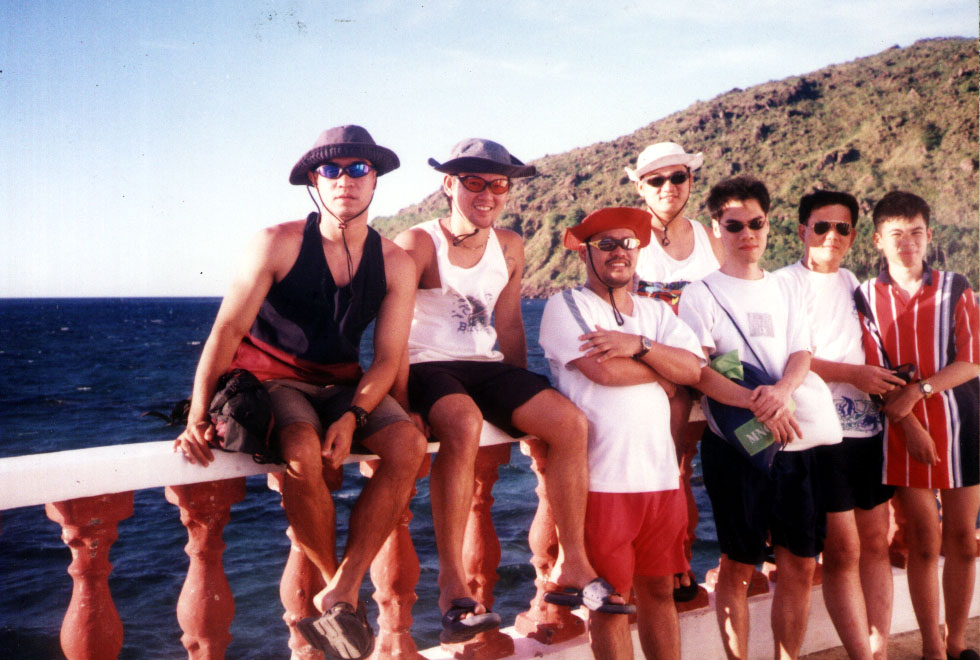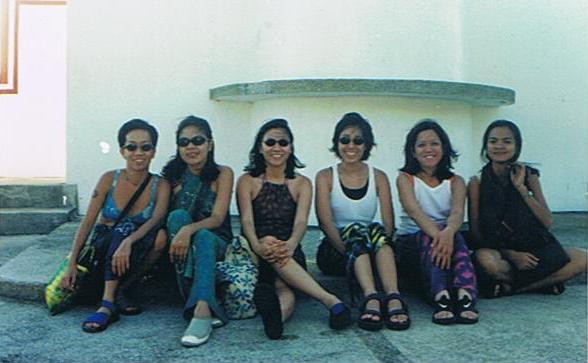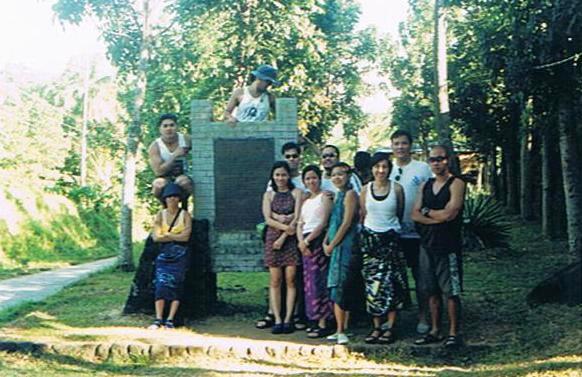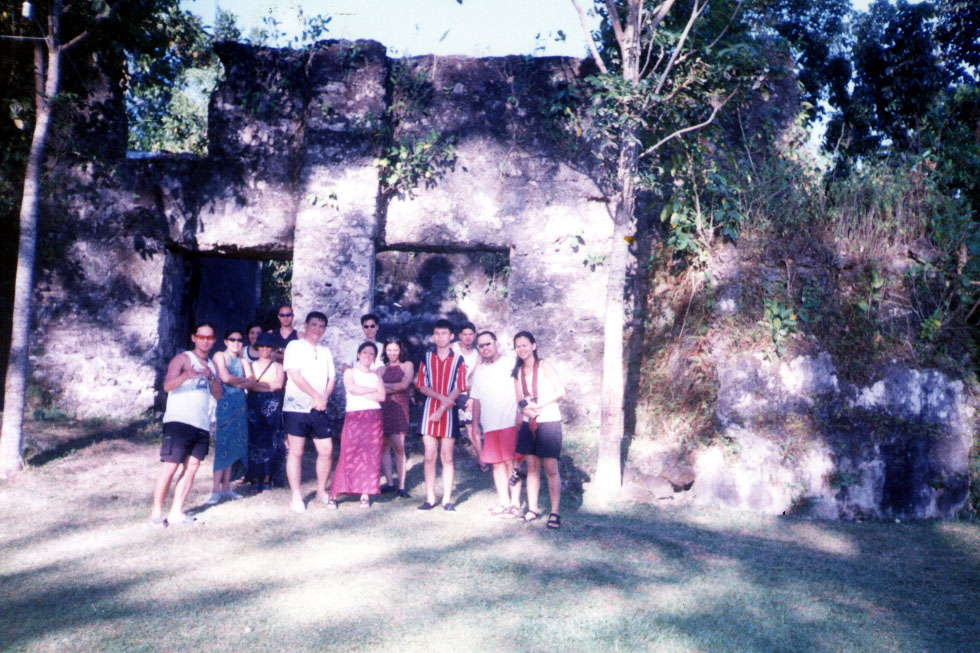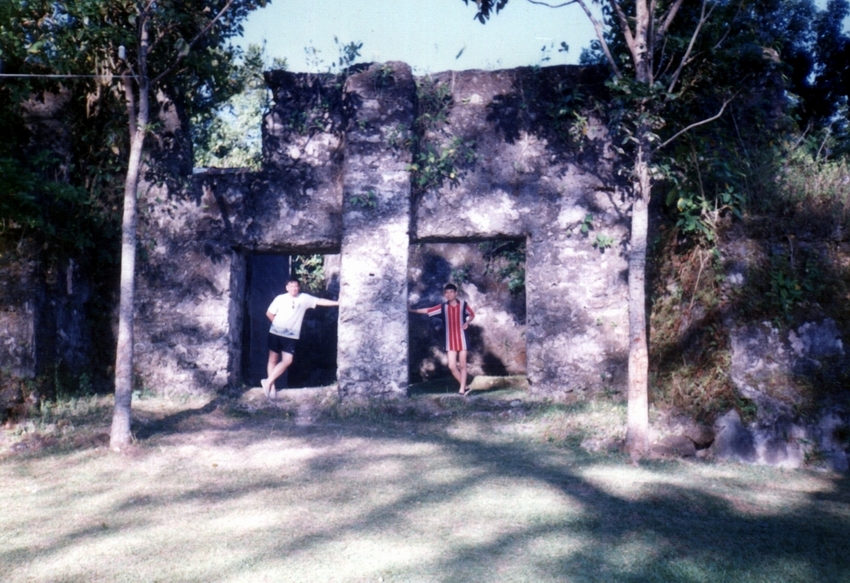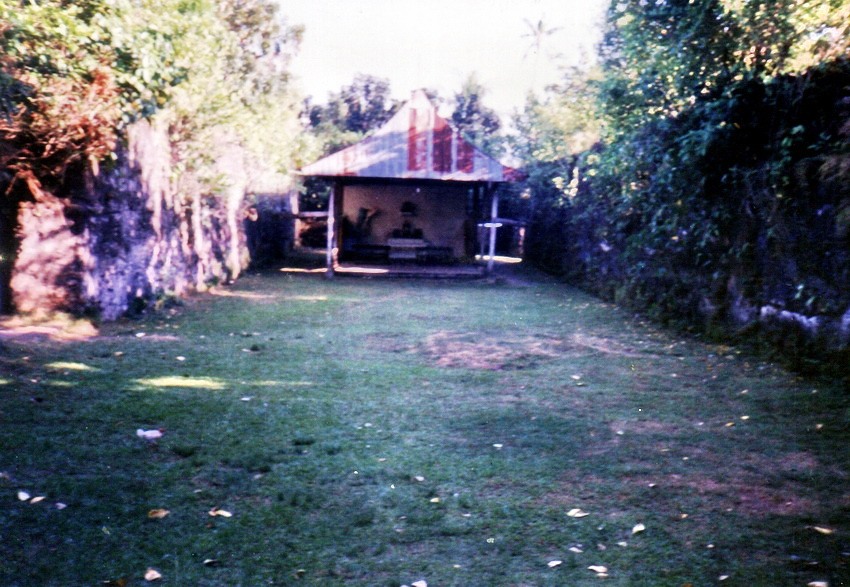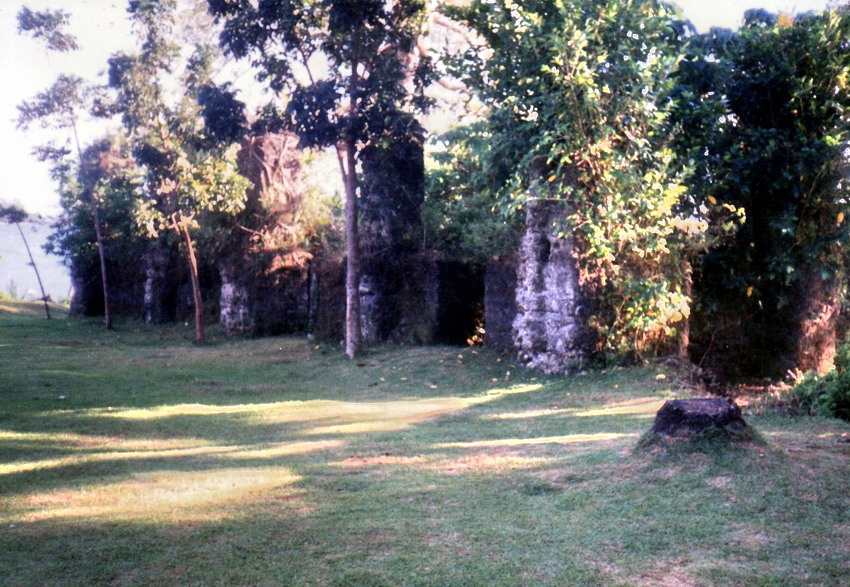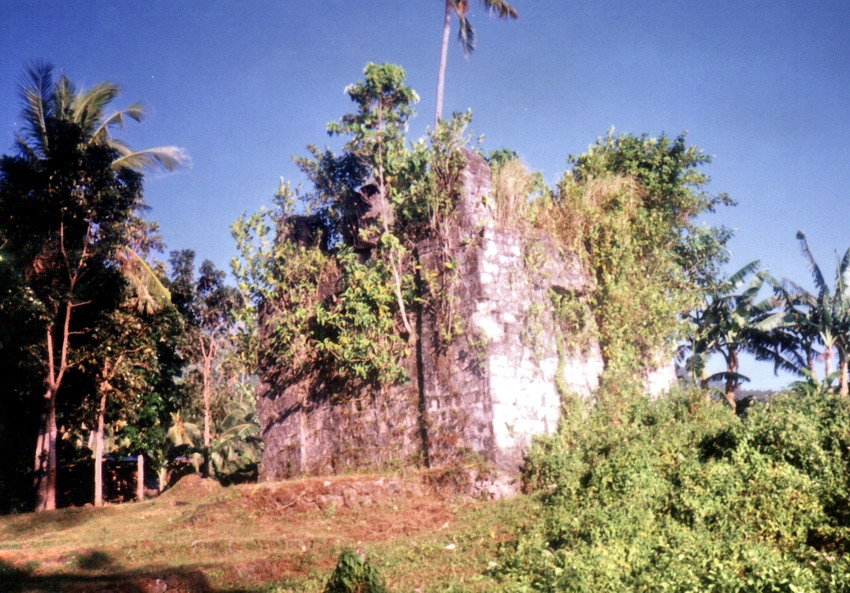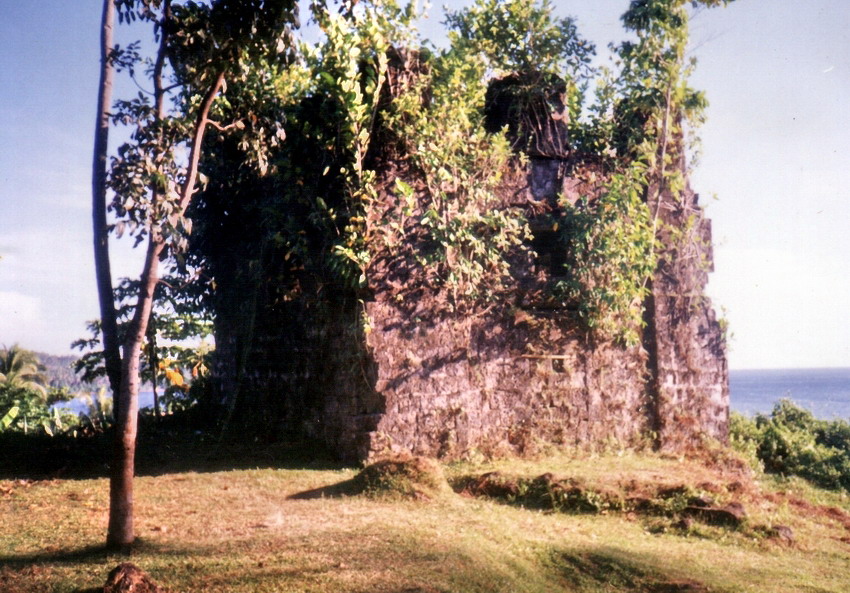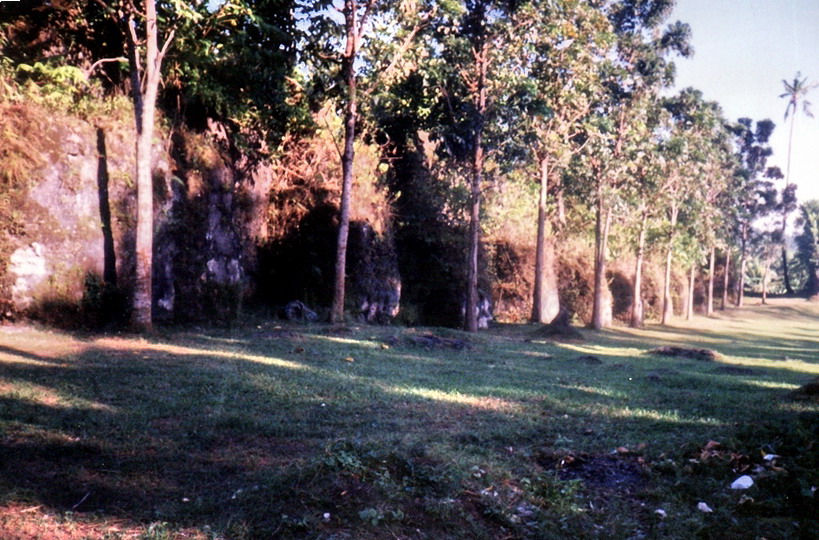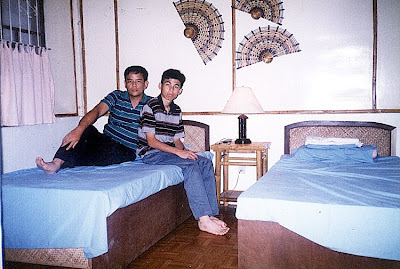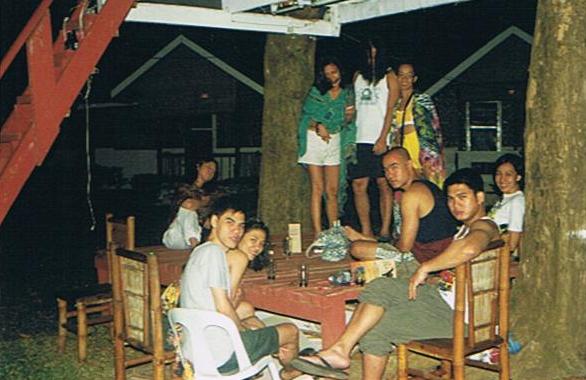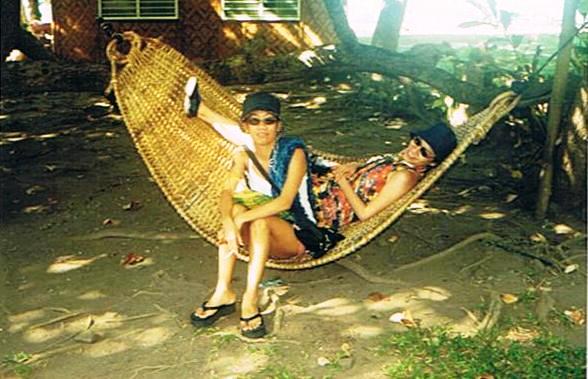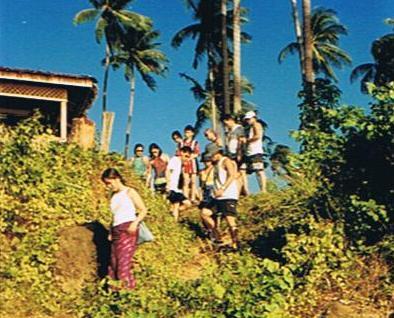| Kibila Beach |
On April 12, Holy Thursday, we checked out of Dayon sa Cabuaan Beach Resort and proceeded to Kibila Beach, in Sitio Kibila, Brgy. Cantaan, Guinsiliban where we were to stay two nights. This 750-m. long, coarse white sand beach, the only one in the mainland, has a well by the beach and a seabed that slopes gradually.
We all stayed at the DENR Training Center and Dive Camp, managed by the Cantaan Fishermen’s Assn., CBFM Scholarship Foundation, Inc. and the DENR. It has a canteen, dining hall, cottage with bath and a seminar hall. Our stay was spent sunbathing, snorkeling, dining al fresco, chatting (and playing Taboo) by a bonfire at night and sleeping in folding beds by the seashore. We also visited a nearby Clam Culture Farm funded by a PhP120,000 grant from the Foundation for the Philippine Environment. One of our evenings was capped by a marriage proposal (with the accompanying engagement ring hidden in a crab shell) coming from Jake to his girlfriend Tey. How romantic!
We departed Camiguin on an early Black Saturday morning , April 14, on board a very delayed and hopelessly overcrowded ferry back to Cagayan de Oro City for an overnight stay. After last minute shopping for pasalubong at Cagayan de Oro’s Cogon Market (mostly Indonesian batik products) Jandy, Vi and I left the city for Manila on April 15, Easter Sunday, on the 11:35 AM Cebu Pacific flight, arriving at Manila by 1 PM. The others followed suit on the 3:30 PM PAL flight (They almost missed it).


